- Home
- Tom Clancy
Battle Ready Page 11
Battle Ready Read online
Page 11
But the first thing I did was hook up with Hoa, who told me that the flank of his company was reporting U.S. armored personnel carriers a short distance away (the American unit I’d wanted to link up with). He and I walked over to take a look. As we got there, U.S. soldiers were making their way toward us, led by an Army captain whose company had shared a security position some weeks back with one of our Vietnamese Marine units. He was a good officer and I was glad to finally see something positive in this mess.
After we greeted each other, he told me that his mechanized infantry company was supporting the ARVN regiment, but had suffered some casualties, including losing a couple of their M-113 armored personnel carriers in futile attacks that were poorly conducted by the ARVN. The ARVN infantry had held back in the attacks and then fled, leaving his tracks exposed to VC “spider traps”—camouflaged holes from which the VC would spring up and hit units after they’d passed by. In this case, the VC had fired rifle-propelled grenades (RPGs) into the rear of the M-113s.
Just then, the Marines behind us began to pick up their equipment, preparing to move out. After checking in on his radio, Hoa confirmed that.
This seemed crazy. The VC were dug in below in strong positions at the edge of the village. There were a lot of them, and they were in good shape (we thought), while we were not yet up to full strength. The three of us hurried toward Kinh’s location to find out what was happening.
Kinh was furious: The ARVN general had persisted in his order to attack the dug-in VC.
“This is insane,” I told Kinh. All the air and artillery strikes and ground attacks had so far failed to break the VC. Two light infantry companies would be slaughtered.
“You’re right,” he shrugged angrily. There was nothing he could do. He then gave me a bitter look. “I don’t want you to go in this attack,” he said.
I looked at this man whose warrior spirit I greatly admired. “There’s nothing on this hill worth staying for,” I told him. “I want to be with our Marines.”
He smiled.
Then the U.S. Army captain added his two cents. “If you attack,” he said, “my company is going with you. I agree. Nothing on the hill is worth staying for.”
Kinh smiled again.
We quickly coordinated plans and made preparations for the attack.
As we walked away, the Army captain asked me to make sure the Vietnamese Marines stayed in front of his tracks this time.
Hoa had overheard him. Before I could answer, he’d shoved himself inches from the captain’s face. “We are Marines,” he said. “We will always be in front of you.”
The captain smiled at me. “I like this guy,” he said.18
After issuing orders and coordinating our attack, we formed up and moved out.
It would have been nice to lay down air strikes before we hit the VC, but we were out of luck this time. Though we had some air on station, we did not have any discernible targets for them. We knew the VC lines were at the base of our hill and on the edge of the village complex beyond it, but I could not see any indications of the enemy. Since they were masters of camouflage, this was not significant.
It turned out that our worries were groundless.
As we moved closer to the base of the hill, I expected heavy fire; but we were met only by light, sporadic shots. Our lead troops returned them.
Moments later we were on top of the VC defensive positions, and there was still no serious fire. They were withdrawing. They did not intend to fight. The light fire had obviously come from their rear units trying to delay us and protect their retreat.
At that point, we made three quick assumptions: that they had not observed the ARVN chaos, that the sight of the helos landing had convinced them that reinforcements had arrived, and that they were in no condition to handle another attack from fresh troops.
A short time later, these assumptions proved to be true. They’d taken far more casualties than we’d thought: Our Marines had uncovered mass graves behind the enemy fighting positions—large pits containing piles of bodies hastily covered with palm fronds. We estimated there were as many as eighty bodies in one, and the others contained perhaps ten or twenty apiece. (I learned later that a total of 650 VC had been killed before the Marines arrived. This had been a major battle.)
By then I was up on the radio reporting our situation to our task force headquarters. Though Kinh did not want to be careless with such a potentially large force in front of us, he was an aggressive commander and eager to move out fast to catch the retreating VC.
In the light of this chance to grab more enemies, the reply from the task force was incredible. “The Corps command wants you to count the bodies in the pits,” they told me. Americans had a fixation on body counts. It was some mad managerial types’ way to “statistically” measure battlefield success. And it was senseless. Counting dead bodies was always nuts, but in this case it was triple nuts: Many of these corpses been in the pits for days; the intense heat had made the stench unbearable. But far more important, our troops were ready to move on. There was enemy out there that was reeling and vulnerable.
When I told Kinh what Corps command had ordered, he quietly said, “We don’t count bodies,” and gave the order to move out. That was good enough for me; and I happily told higher headquarters we weren’t going to do it. I took a lot of grief for that; but I’d been in Vietnam for ten months by then, and telling the rear to go pound sand no longer bothered me.
Soon we were moving into the remains of the village I remembered so well—an eerie scene that will always haunt me. The once-beautiful village was now rubble, the houses blown apart, the palm trunks snapped and twisted. There was a strong stench of dead bodies and animals; and a gray fog-like mist hanging over the place at treetop level made it difficult to see beyond a few dozen meters. (I guessed it had been caused by dust stirred up by the bombs and shells that had impacted in the area.)
The ghastly scene spooked the Marines. The VC didn’t scare them; but their highly superstitious nature was clearly convincing them this was a bad place.
We slowly moved on line across the destroyed village, staring intently into the mist. At one point we noticed a large portion of an animal hanging in a tree—a section of a water buffalo that had been blown apart. A little later, we came upon a man’s body, his face pale gray and the top of his head blown off. As we stared at him, we were startled by a sudden movement—a snake crawling out of his open skull.
To the Vietnamese troops, this was definitely a bad omen.
We nervously pressed on.
A little later, I dimly made out a motionless figure in the haze. The Marines, seeing it too, began to ready their weapons. The figure remained motionless. As we got closer, we began to realize it was a small boy. He was frozen, just staring straight ahead, totally unaware of us. When we reached him, a Vietnamese Marine took his hand and brought him along with us. He trotted along, still mute.
We continued on for several days19 through many more equally horrific scenes.
Though we made occasional contact with the enemy, the VC was not interested in a fight. They’d just throw out a few shots to slow us down. We took some wounded from these small contacts, but nothing serious.
An officer lying next to me during one exchange of fire was hit by a round that penetrated only about an inch deep into his thigh—evidence that the enemy was shooting at us from a great distance, desperately hoping to keep us off their back. He easily popped it out.
After a time, intelligence reports from prisoner interrogations and accounts of villagers who had made their way out of the battle area began to filter down to us. The enemy unit we were chasing was identified as the 22nd NVA Regiment, augmented with some local VC elements. Badly mauled, the remnants were cut off by other U.S. and South Vietnamese units and further hammered as they fled for the hills to the west.
Some reports claimed the NVA commander was a woman, but that was never verified. We often got similarly crazy reports: A commander was seen riding a white horse or
was a Chinese officer or a Russian. I put this report in the same category.
Our mission ended when we reached Highway 1, the western boundary of our assigned zone of action—now cleared. The enemy escaping to the west were now in zones of other units. We’d suffered a few wounded and bagged a number of the enemy; but, overall, the fighting was a lot lighter than we’d anticipated. Our troops were drained from several days of continuous movement and running firefights, but even more from the horrible sights they’d witnessed. The small boy, though, was still with us, cared for by the Marines. He never spoke a word. Later, we turned him over to civilians on Highway 1 who knew him.
Much of Highway 1—as the main thoroughfare of South Vietnam—was a commercial strip, with small shops, cafes, market stalls, and restaurants all along it. Normally there was heavy traffic on the highway; but this had been swelled by crowds of refugees who had fled the fighting, many of them injured.
As we started heading south along the highway, we came upon an ARVN mechanized unit at a semidestroyed railroad station who didn’t look like they’d done any fighting. When our Marines spotted the unit, I sensed some bad blood; but didn’t think much about it.
Meanwhile, we learned that trucks were on the way to take us back to our original bases to the south. Since no one knew exactly when they would arrive, the commanders decided to let the troops take advantage of the cafes and soup stalls along the road for a rare time-out from more serious business. Hoa invited me to join him for noodle soup and a beer in one of the shops. It sounded great.
Hoa and I were enjoying our bowls and beers when we noticed Marines in combat gear moving past the shop’s open entrance, stealthily creeping forward as though to an enemy target. Curious, we went to the doorway to see what was going on. Kinh was directing the Marines, getting them in position for an attack.
“Kinh,” I called to him, “what’s going on?” But he ignored me.
Suddenly the street erupted in fire.
Hoa and I ducked down inside the shop, and I grabbed my radio to find out what was going on. The shopkeeper repeatedly motioned for us to get into the family protection bunker he had built into the floor. “No, no, you go in,” we told him. We had to try to sort out what was happening.
When I contacted Bob Hamilton, he told me that the Marines seemed to be deliberately attacking another South Vietnamese unit. I could see from the doorway that the Marines were firing at the ARVN mechanized unit we’d seen earlier. By now the firing was heavy and rounds were zinging all over. We were at the point of contact between the two units.
The task force senior adviser came up on the radio, really energized. “I’ve got the U.S. Army adviser of the ARVN unit on the radio net,” he told me. I acknowledged that. “What we’ve got to do is get our units to stop this intramural firefight,” he continued.
“I’ll go out into the street to try,” I said. I thought that if I went out and both sides saw my uniform, they might stop this thing.
“I’ll go with you,” Hoa said. I passed that on to the senior adviser.
I also linked up with the Army adviser to the ARVN unit. But when he chimed in that he didn’t get paid to stop friendly firefights and refused to leave his bunker, I decided I wouldn’t get anywhere arguing with him. I had better things to do.
When Hoa and I looked out into the street again, we realized that many of the rounds whizzing past were .50 caliber rounds from the ARVN armored personnel carriers. And the Marines were firing recoilless rifles. Really heavy stuff was whizzing back and forth through the space we intended to occupy. We looked at each other, shrugged, then went slowly out into the street yelling in Vietnamese: “Cease fire!”
As we moved farther out into the street, and the guys on both side saw who we were, they all sobered up, and the fire began to drop off a little . . . though not before some .50 caliber slugs had zinged by my ear. At that moment, a figure came running toward us from the ARVN unit and met us midway. It was a black U.S. Army staff sergeant, one of the advisers.
“I was cleaning up,” he said, “when I heard the firing. I rushed out as soon as I could.”
When I told him what his officer had said, he rolled his eyes. “It figures,” he said.
The three of us then huddled between the forces, yelling to our respective sides to stop firing. After a few minutes, thankfully, the shooting stopped.
The situation remained tense until Major Voung and the other Vietnamese commanders (as well as Bob Hamilton) came screaming up the road in jeeps and drove into the railroad station. Moments later, a helicopter landed. A Vietnamese major general climbed out and joined them—obviously sent there to sort out the mess and get the units separated. When Major Voung passed us on the way in, he looked angrier than I had ever seen him.
We waited to hear what was being decided inside. The discussion was obviously heated; and there was a lot of yelling.
While this was going on, Hoa had a few moments free to explain what was going on. “We’ve hated these guys for a long time,” he told me. “Years ago, the ARVN unit bugged out in a firefight and abandoned us. Seeing them spurred the old hatred; and some of the troops got into a brawl that boiled over into this mess.”
A little later, I began to sense something was coming to a head. Kinh was moving troops around, positioning our battalion to surround the train station. When he completed this movement, he went inside and whispered something to Major Voung. The major immediately stopped the discussions. “The station is surrounded,” he announced. “The Marines will attack unless the commander and executive officer of the ARVN unit are turned over to the Marines for execution.”
The major general couldn’t allow that. But the situation was almost out of his control; and Kinh wanted to attack in the worst way. Voung remained open to reason, though, and, after a lot of jawboning, he was persuaded to back off.
The arrival of our trucks helped the situation. The troops were anxious to get back to our bases. And so we boarded the trucks—to my enormous relief—and got out of there. We arrived back home late that night; and I slept until midmorning.
After breakfast, when I joined Bob Hamilton in his bunker, he told me he was putting me in for a Navy and Marine Corps Medal (given for heroism in noncombat situations, normally for saving lives).
“Thanks,” I told him, “I appreciate it. But the Army staff sergeant should also be nominated for the Soldier’s Medal [the Army equivalent].”
“I’ll take care of it,” he said, after I’d described what happened.
Though I never received the medal, I did get a letter some months after I left Vietnam from a U.S. Army colonel, the senior adviser of the 22nd ARVN Division. “Your timely intervention during this confrontation,” the last paragraph said, “prevented a situation which could have been extremely embarrassing to the Vietnamese government.”
It was obvious the brass wanted to bury the incident without the publicity of awarding medals. That was fine with me.
MEDEVAC ONE
In the tenth month of his one-year tour, Zinni was with the 4th Battalion, operating in a remote and heavily vegetated area of the hills near the Central Highlands in II CTZ. It had been a good ten months; he was thinking about extending for another six.
He was caught up in this conflict. It had become his life. He knew this was where he belonged. He knew exactly why he was there and what he was doing . . . and felt absolutely confident about that. He knew he could handle himself in a firefight, or in any other tactical situation he might encounter. He had a very close relationship with the Vietnamese Marines. They were his buddies and friends; he’d seen a lot of them die. “My purpose for being was right there,” he explains now.
The bad news: He felt terrible. The rigors of constant field operations had taken its toll. Though other advisers were commenting on his weight loss—about forty pounds (and he was small to start with)—that didn’t bother him much. They had all lost weight. He was sick with something he couldn’t shake. All the advisers had bouts of
dysentery, but his latest round didn’t go away. His urine had turned black as coffee, his skin was turning yellow, sleeping was difficult, he was having trouble eating (everything he tried made him nauseous), and he was growing weaker by the day. Something had to be done. But what? He wanted to hang on until he got back to a rear area, but he knew he needed to see an American doctor (the Vietnamese doctor had given him shots that had no effect). He thought an American doctor would have medicine that would work better and get him back to full strength faster.
One day the patrol he was with passed close to an American Army forward logistic base set up on a mountaintop (making it easy to defend and to support troops in the field by helo).
“I’d like to go up to the base and pick up some medicine,” he told the patrol leader.
“Let’s go,” he agreed.
As they approached the hilltop position, the soldiers providing security challenged them. “I’m an American Marine,” Zinni announced. That did not compute with them. He was accompanied by Vietnamese troops; he was wearing a Vietnamese Marine uniform, tiger stripes, and a green beret; and he was carrying a grease gun. Since the Army troops didn’t know that Marines were in their Corps area and were unfamiliar with advisers, they decided not to take any chances. They didn’t ask for the Marines’ weapons, which remained slung, but they weren’t about to welcome them like friends.
“I need to see a doctor,” Zinni told them.
They contacted their officer, who told them it was okay to take him to the medical aid station—but under guard. They did that.
As they approached the field hospital, a voice yelled out to Zinni. “Stop. Hold it where you are.”
A captain with medical insignia came out of a tent with a bottle and handed it to Zinni. “Piss into this.”
As black urine filled the vial, he said, “I don’t know who or what you are; but if you’re an American, your tour is over and I’m medevacing you.”
“I can’t go now,” Zinni answered. “Just give me some pills, and I’ll be okay.”

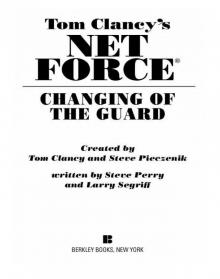 Changing of the Guard
Changing of the Guard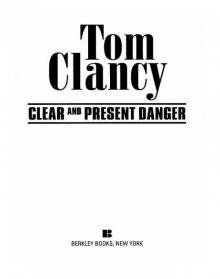 Clear and Present Danger
Clear and Present Danger Hounds of Rome
Hounds of Rome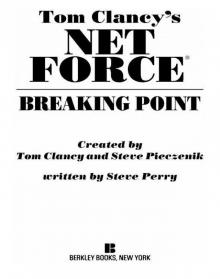 Breaking Point
Breaking Point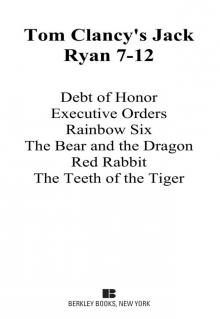 Tom Clancy's Jack Ryan Books 7-12
Tom Clancy's Jack Ryan Books 7-12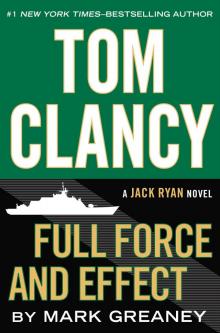 Full Force and Effect
Full Force and Effect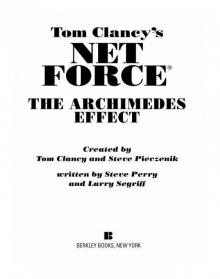 The Archimedes Effect
The Archimedes Effect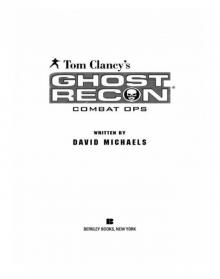 Combat Ops
Combat Ops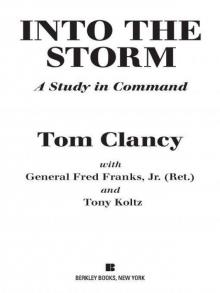 Into the Storm: On the Ground in Iraq
Into the Storm: On the Ground in Iraq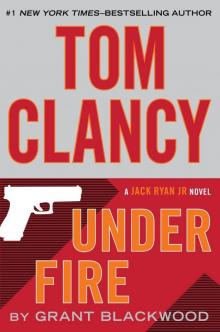 Under Fire
Under Fire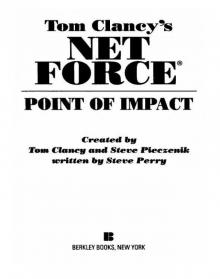 Point of Impact
Point of Impact Red Rabbit
Red Rabbit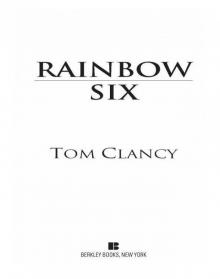 Rainbow Six
Rainbow Six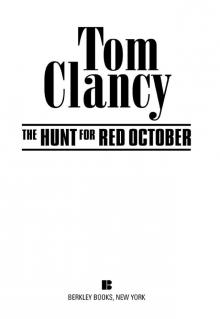 The Hunt for Red October
The Hunt for Red October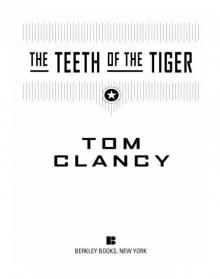 The Teeth of the Tiger
The Teeth of the Tiger Conviction (2009)
Conviction (2009)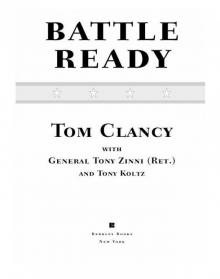 Battle Ready
Battle Ready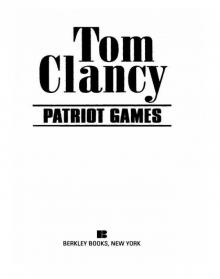 Patriot Games
Patriot Games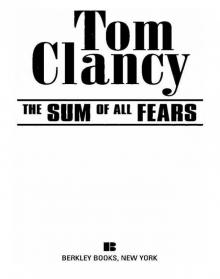 The Sum of All Fears
The Sum of All Fears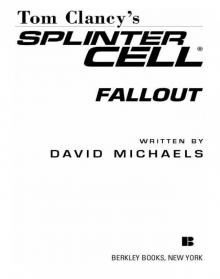 Fallout (2007)
Fallout (2007) Red Storm Rising
Red Storm Rising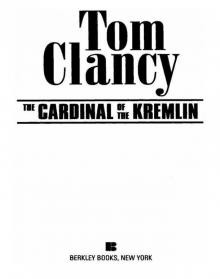 The Cardinal of the Kremlin
The Cardinal of the Kremlin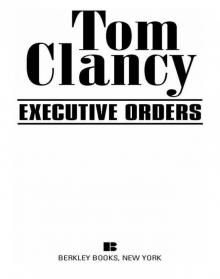 Executive Orders
Executive Orders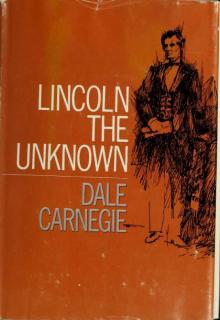 Lincoln, the unknown
Lincoln, the unknown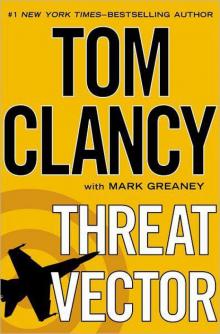 Threat Vector
Threat Vector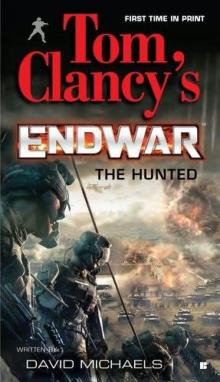 The Hunted
The Hunted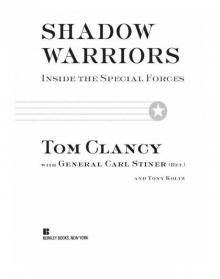 Shadow Warriors: Inside the Special Forces
Shadow Warriors: Inside the Special Forces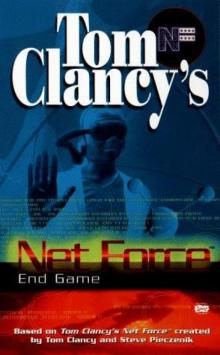 End Game
End Game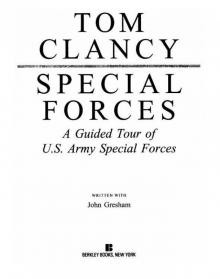 Special Forces: A Guided Tour of U.S. Army Special Forces
Special Forces: A Guided Tour of U.S. Army Special Forces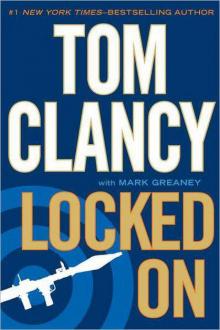 Locked On
Locked On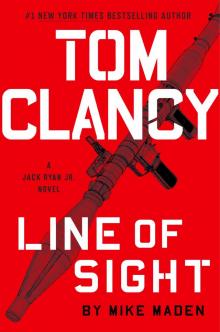 Line of Sight
Line of Sight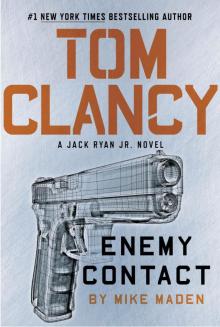 Tom Clancy Enemy Contact - Mike Maden
Tom Clancy Enemy Contact - Mike Maden Fighter Wing: A Guided Tour of an Air Force Combat Wing
Fighter Wing: A Guided Tour of an Air Force Combat Wing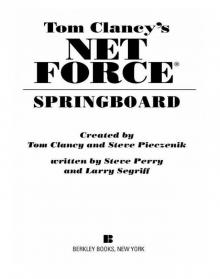 Springboard
Springboard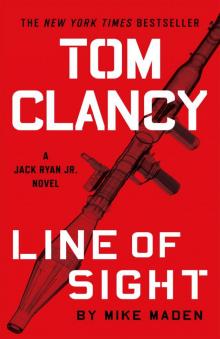 Line of Sight - Mike Maden
Line of Sight - Mike Maden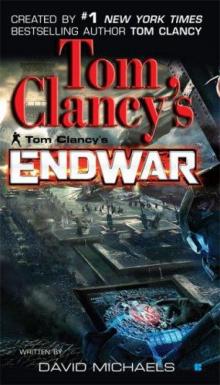 EndWar
EndWar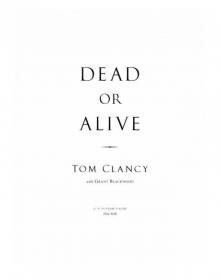 Dead or Alive
Dead or Alive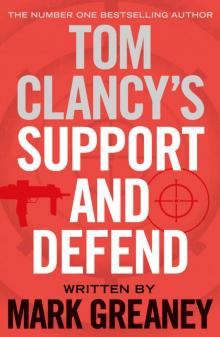 Tom Clancy Support and Defend
Tom Clancy Support and Defend Checkmate
Checkmate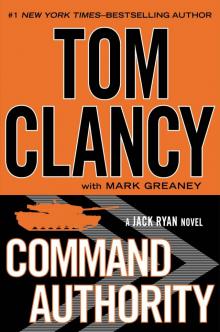 Command Authority
Command Authority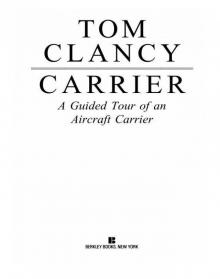 Carrier: A Guided Tour of an Aircraft Carrier
Carrier: A Guided Tour of an Aircraft Carrier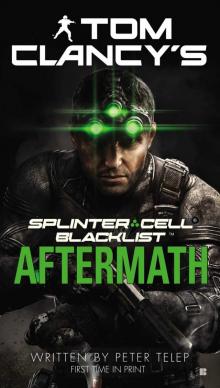 Blacklist Aftermath
Blacklist Aftermath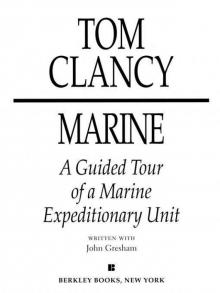 Marine: A Guided Tour of a Marine Expeditionary Unit
Marine: A Guided Tour of a Marine Expeditionary Unit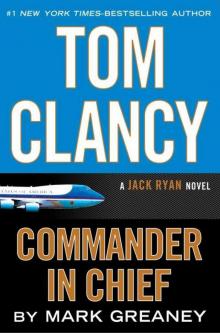 Commander-In-Chief
Commander-In-Chief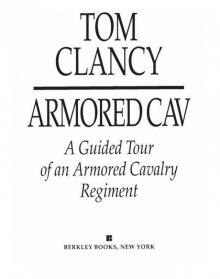 Armored Cav: A Guided Tour of an Armored Cavalry Regiment
Armored Cav: A Guided Tour of an Armored Cavalry Regiment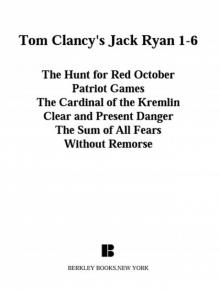 Tom Clancy's Jack Ryan Books 1-6
Tom Clancy's Jack Ryan Books 1-6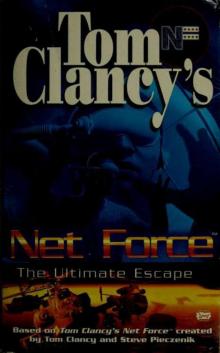 The Ultimate Escape
The Ultimate Escape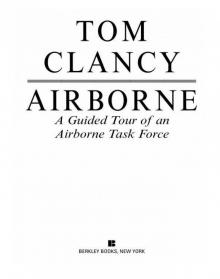 Airborne: A Guided Tour of an Airborne Task Force
Airborne: A Guided Tour of an Airborne Task Force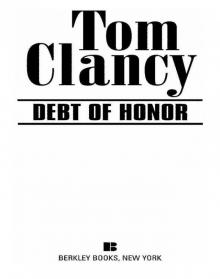 Debt of Honor
Debt of Honor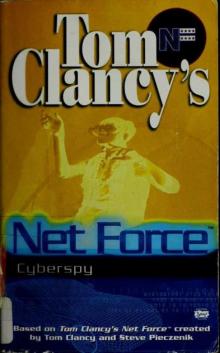 Cyberspy
Cyberspy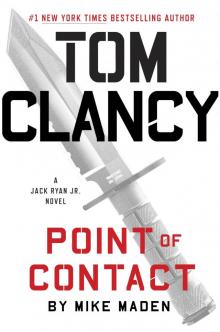 Point of Contact
Point of Contact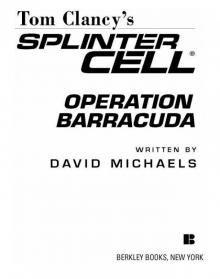 Operation Barracuda (2005)
Operation Barracuda (2005)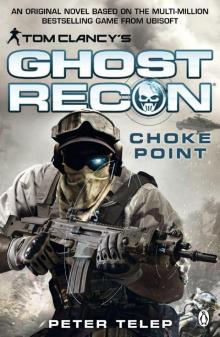 Choke Point
Choke Point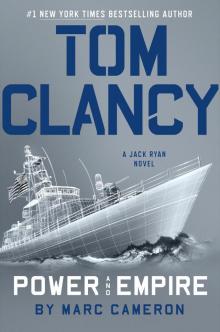 Power and Empire
Power and Empire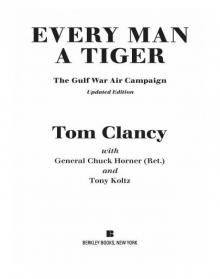 Every Man a Tiger: The Gulf War Air Campaign
Every Man a Tiger: The Gulf War Air Campaign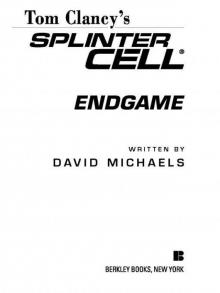 Endgame (1998)
Endgame (1998)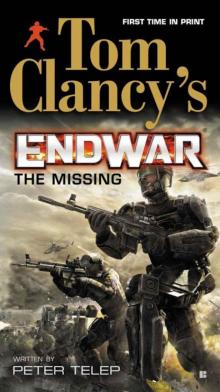 EndWar: The Missing
EndWar: The Missing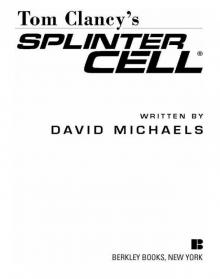 Splinter Cell (2004)
Splinter Cell (2004)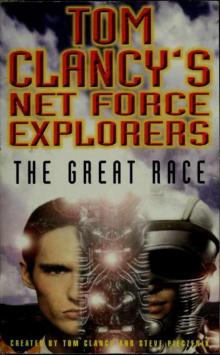 The Great Race
The Great Race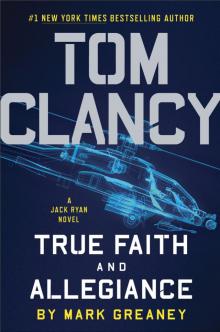 True Faith and Allegiance
True Faith and Allegiance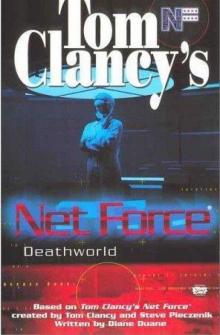 Deathworld
Deathworld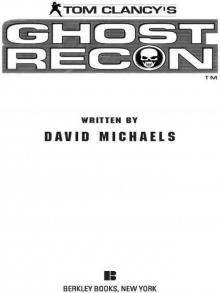 Ghost Recon (2008)
Ghost Recon (2008)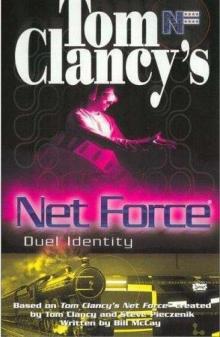 Duel Identity
Duel Identity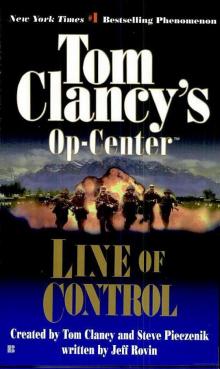 Line of Control o-8
Line of Control o-8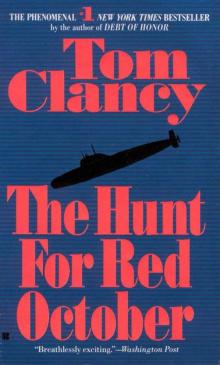 The Hunt for Red October jr-3
The Hunt for Red October jr-3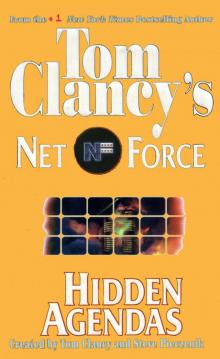 Hidden Agendas nf-2
Hidden Agendas nf-2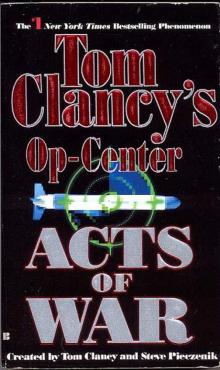 Acts of War oc-4
Acts of War oc-4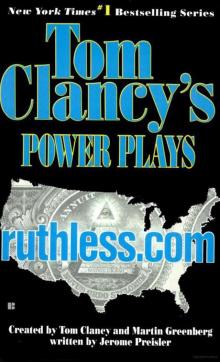 Ruthless.Com pp-2
Ruthless.Com pp-2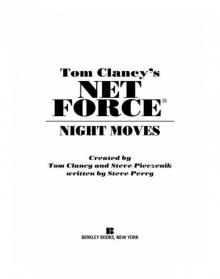 Night Moves
Night Moves The Hounds of Rome - Mystery of a Fugitive Priest
The Hounds of Rome - Mystery of a Fugitive Priest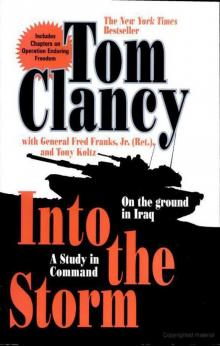 Into the Storm: On the Ground in Iraq sic-1
Into the Storm: On the Ground in Iraq sic-1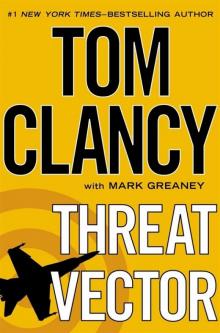 Threat Vector jrj-4
Threat Vector jrj-4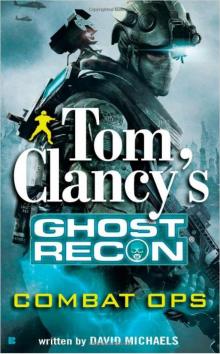 Combat Ops gr-2
Combat Ops gr-2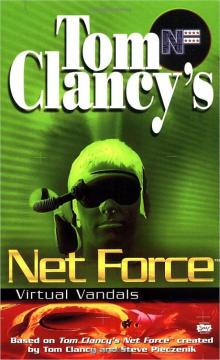 Virtual Vandals nfe-1
Virtual Vandals nfe-1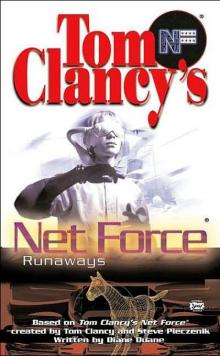 Runaways nfe-16
Runaways nfe-16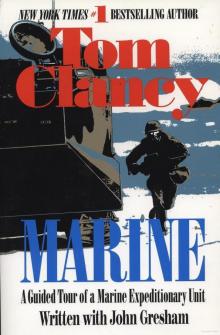 Marine: A Guided Tour of a Marine Expeditionary Unit tcml-4
Marine: A Guided Tour of a Marine Expeditionary Unit tcml-4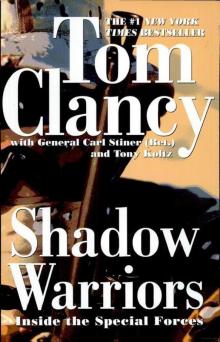 Shadow Warriors: Inside the Special Forces sic-3
Shadow Warriors: Inside the Special Forces sic-3 Jack Ryan Books 1-6
Jack Ryan Books 1-6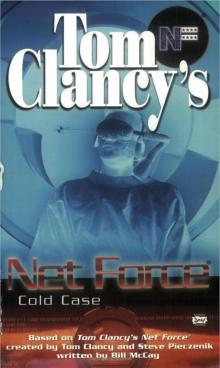 Cold Case nfe-15
Cold Case nfe-15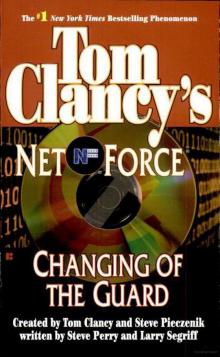 Changing of the Guard nf-8
Changing of the Guard nf-8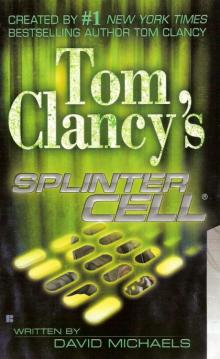 Splinter Cell sc-1
Splinter Cell sc-1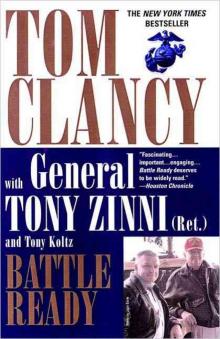 Battle Ready sic-4
Battle Ready sic-4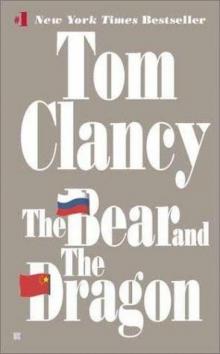 The Bear and the Dragon jrao-11
The Bear and the Dragon jrao-11 Fighter Wing: A Guided Tour of an Air Force Combat Wing tcml-3
Fighter Wing: A Guided Tour of an Air Force Combat Wing tcml-3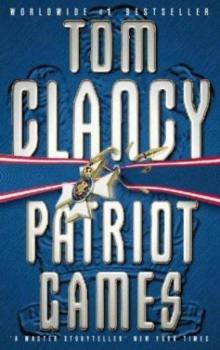 Patriot Games jr-1
Patriot Games jr-1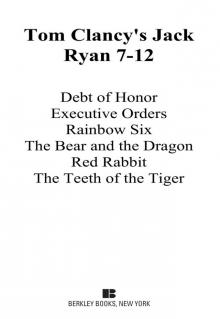 Jack Ryan Books 7-12
Jack Ryan Books 7-12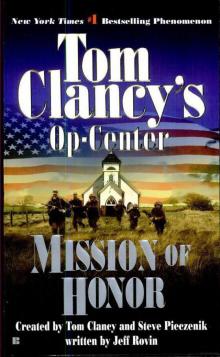 Mission of Honor o-9
Mission of Honor o-9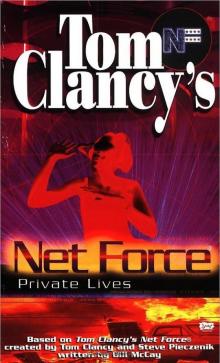 Private Lives nfe-9
Private Lives nfe-9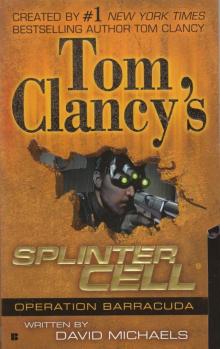 Operation Barracuda sc-2
Operation Barracuda sc-2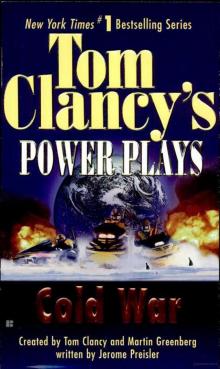 Cold War pp-5
Cold War pp-5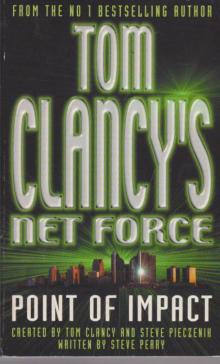 Point of Impact nf-5
Point of Impact nf-5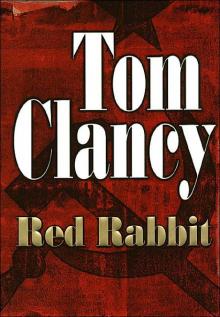 Red Rabbit jr-9
Red Rabbit jr-9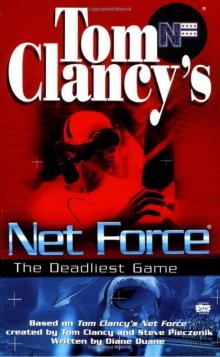 The Deadliest Game nfe-2
The Deadliest Game nfe-2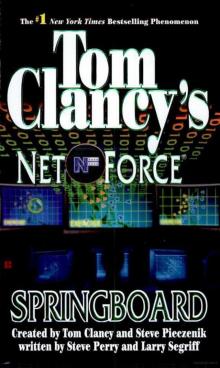 Springboard nf-9
Springboard nf-9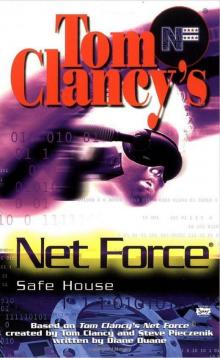 Safe House nfe-10
Safe House nfe-10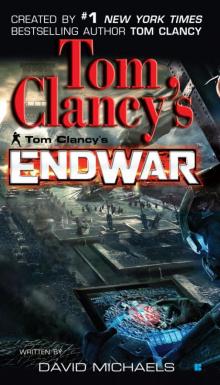 EndWar e-1
EndWar e-1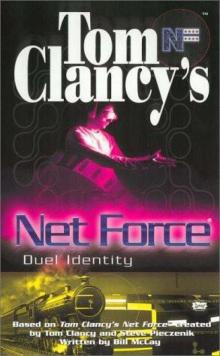 Duel Identity nfe-12
Duel Identity nfe-12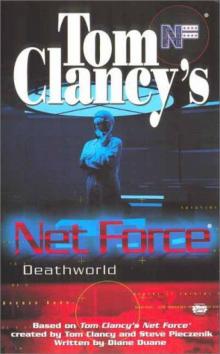 Deathworld nfe-13
Deathworld nfe-13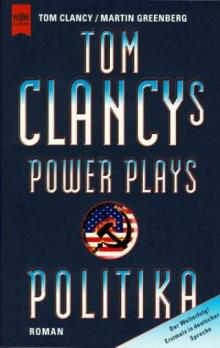 Politika pp-1
Politika pp-1 Rainbow Six jr-9
Rainbow Six jr-9 Tom Clancy's Power Plays 1 - 4
Tom Clancy's Power Plays 1 - 4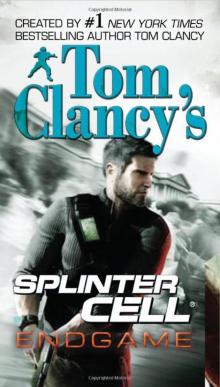 Endgame sc-6
Endgame sc-6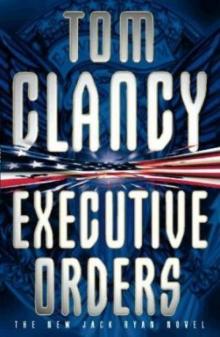 Executive Orders jr-7
Executive Orders jr-7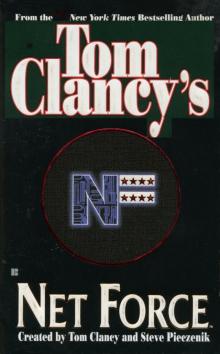 Net Force nf-1
Net Force nf-1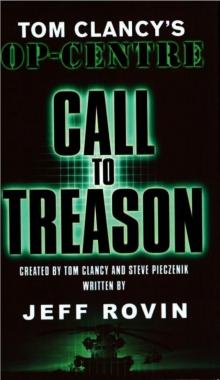 Call to Treason o-11
Call to Treason o-11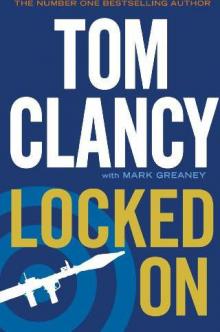 Locked On jrj-3
Locked On jrj-3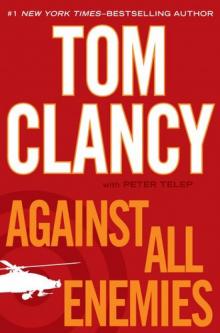 Against All Enemies
Against All Enemies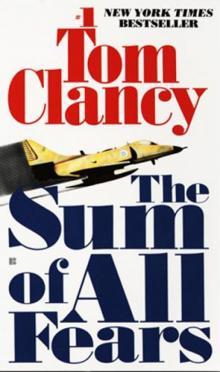 The Sum of All Fears jr-7
The Sum of All Fears jr-7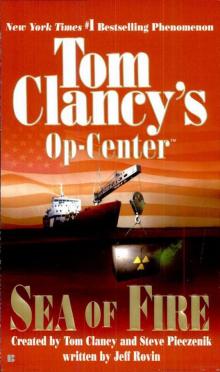 Sea of Fire o-10
Sea of Fire o-10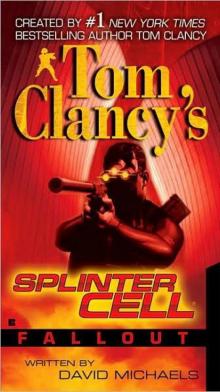 Fallout sc-4
Fallout sc-4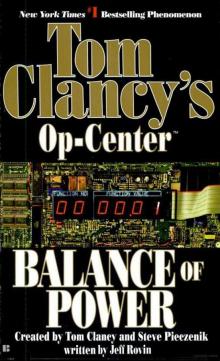 Balance of Power o-5
Balance of Power o-5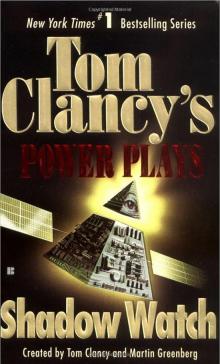 Shadow Watch pp-3
Shadow Watch pp-3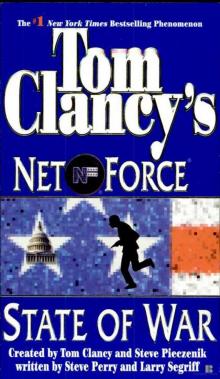 State of War nf-7
State of War nf-7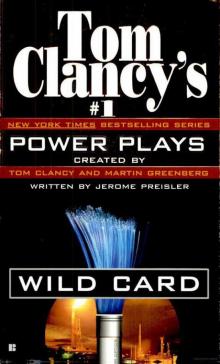 Wild Card pp-8
Wild Card pp-8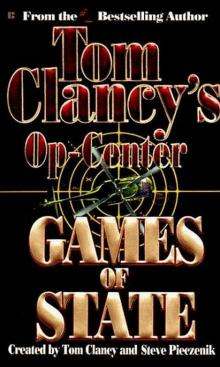 Games of State o-3
Games of State o-3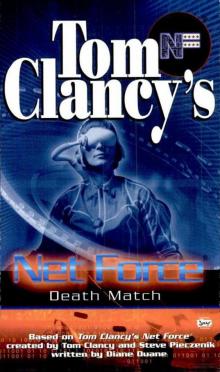 Death Match nfe-18
Death Match nfe-18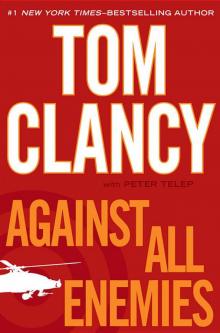 Against All Enemies mm-1
Against All Enemies mm-1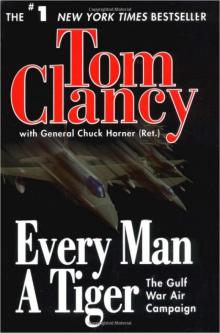 Every Man a Tiger: The Gulf War Air Campaign sic-2
Every Man a Tiger: The Gulf War Air Campaign sic-2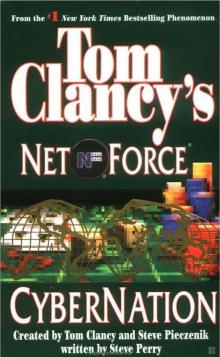 Cybernation nf-6
Cybernation nf-6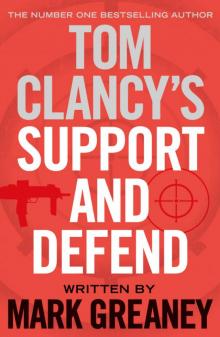 Support and Defend
Support and Defend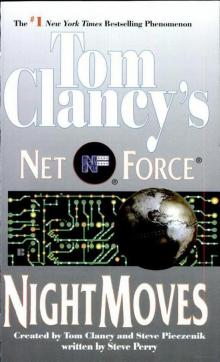 Night Moves nf-3
Night Moves nf-3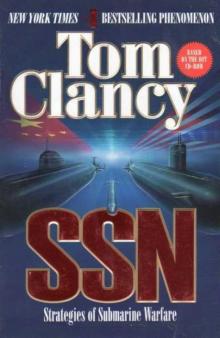 SSN
SSN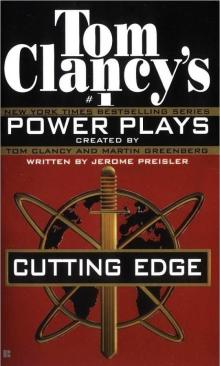 Cutting Edge pp-6
Cutting Edge pp-6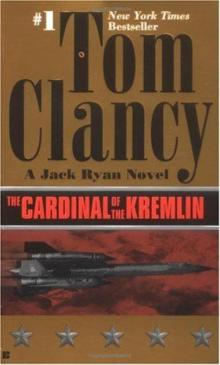 The Cardinal of the Kremlin jrao-5
The Cardinal of the Kremlin jrao-5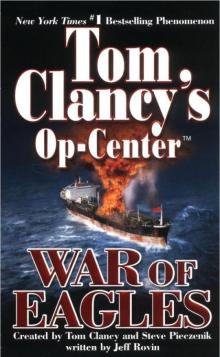 War of Eagles o-12
War of Eagles o-12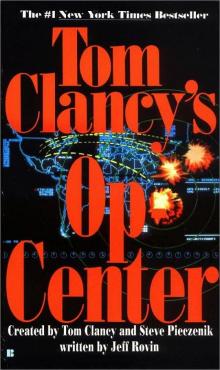 Op-Center o-1
Op-Center o-1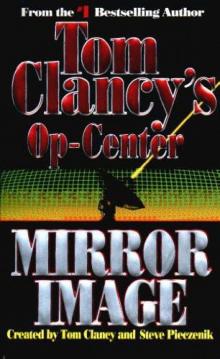 Mirror Image o-2
Mirror Image o-2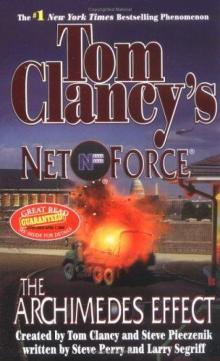 The Archimedes Effect nf-10
The Archimedes Effect nf-10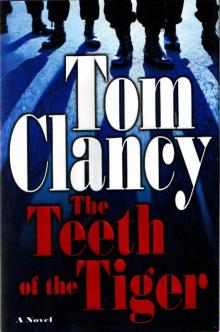 Teeth of the Tiger jrj-1
Teeth of the Tiger jrj-1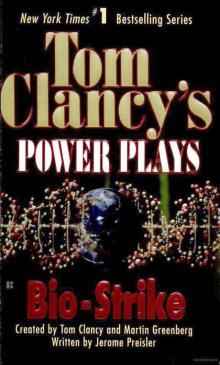 Bio-Strike pp-4
Bio-Strike pp-4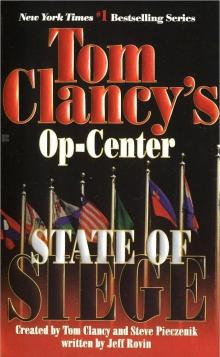 State of Siege o-6
State of Siege o-6 Debt of Honor jr-6
Debt of Honor jr-6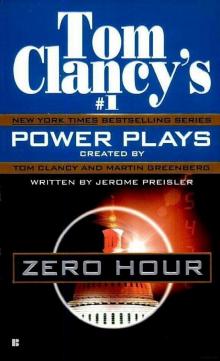 Zero Hour pp-7
Zero Hour pp-7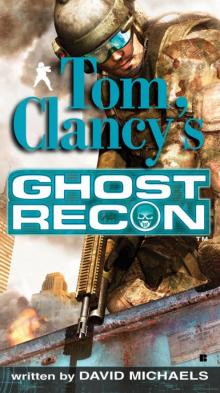 Ghost Recon gr-1
Ghost Recon gr-1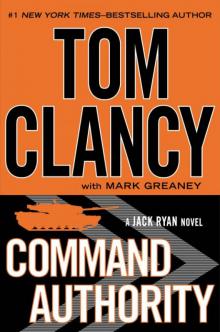 Command Authority jr-10
Command Authority jr-10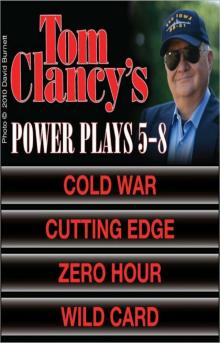 Tom Clancy's Power Plays 5 - 8
Tom Clancy's Power Plays 5 - 8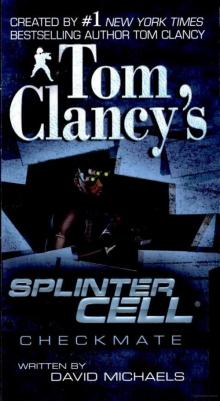 Checkmate sc-3
Checkmate sc-3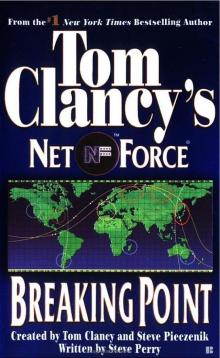 Breaking Point nf-4
Breaking Point nf-4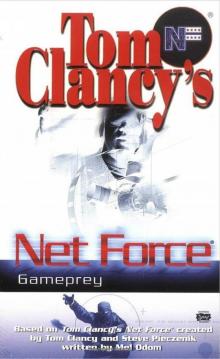 Gameprey nfe-11
Gameprey nfe-11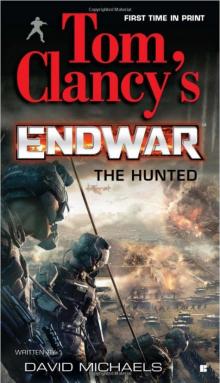 The Hunted e-2
The Hunted e-2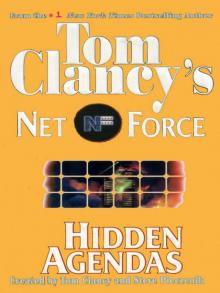 Hidden Agendas
Hidden Agendas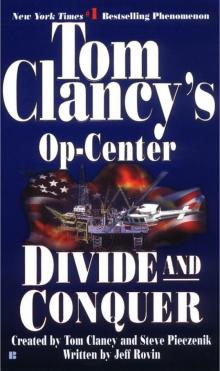 Divide and Conquer o-7
Divide and Conquer o-7